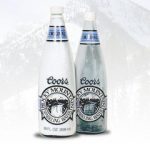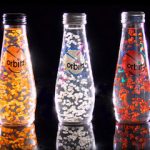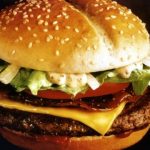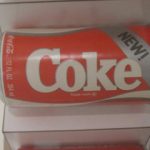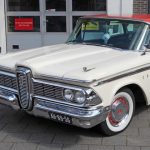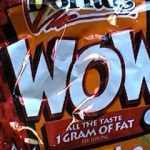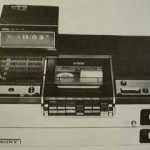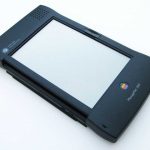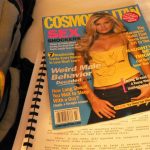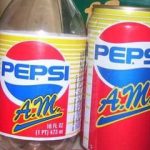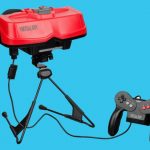Biggest failed products 1
 25 of the biggest failed products from the world’s biggest companies Part 1
25 of the biggest failed products from the world’s biggest companies Part 1
By Ben Gilbert From Business Insider
Launching a product is tough.
“Less than 3% of new consumer packaged goods exceed first-year sales of $50 million — considered the benchmark of a highly successful launch,” say Joan Schneider and Julie Hall, coauthors of “The New Launch Plan.”
That’s part of the reason that the most heavy-hitting names in business — from Nintendo to Netflix, Microsoft to McDonald’s — have had some of the biggest belly flops.
Here’s a look at 25 of those flops, and what we can learn from them.
Aimee Groth, Jay Yarow, and Drake Baer contributed reporting to this story.
1957 — Ford Edsel Flickr/free photos & art
Bill Gates cites the Edsel flop as his favorite case study. Even the name “Edsel” is synonymous with “marketing failure.” Ford invested $400 million into the car, which it introduced in 1957. But Americans literally weren’t buying it, because they wanted “smaller, more economic vehicles,” according to Associated Content:
“Other pundits have blamed its failure on Ford Motors execs never really defining the model’s niche in the car market. The pricing and market aim of most Edsel models was somewhere between the highest-end Ford and the lowest-end Mercury.”
It was taken off the market in 1960.
1975 — Sony Betamax
The 1970s saw a war in home video formats between Betamax and VHS.
Sony made a mistake: It started selling the Betamax in 1975, while its rivals started releasing VHS machines. Sony kept Betamax proprietary, meaning that the market for VHS products quickly outpaced Betamax. Though Betamax was technically superior, VHS won out by simply being ubiquitous.
1985 — New Coke By Like_the_Grand_Canyon on Flickr
In the early 1980s, Coke was losing ground to Pepsi. The infamous “Pepsi Challenge” ads were largely responsible for Pepsi’s surge. In response, Coca-Cola tried to create a product that would taste more like Pepsi.
While New Coke fared well enough in nationwide taste tests before launching in 1985, it turned out those were misleading. Coke abandoned the product after a few weeks and went back to its old formula. It also gave its product a new name: Coca-Cola Classic.
1989, 1992 — Pepsi A.M. and Crystal Pepsi Bevnet.com
In 1989, Pepsi tried to target the “breakfast cola drinker” with Pepsi A.M. It lasted only a year.
In 1992, Pepsi tried again, this time with a clear cola: “Crystal Pepsi.” No dice — it died in 1993. As a throwback, Pepsi briefly re-introduced Crystal Pepsi in 2016. It’s still weird and kinda gross!
1989 — RJ Reynolds smokeless cigarettes RJ Reynolds
In the 1980s, just as anti-smoking campaigns were heating up, RJ Reynolds put $325 million into a new product: smokeless cigarettes.
They didn’t work, and people weren’t buying them — so four months later, they were gone. You might even say the idea went…up in smoke.
1990 — Coors Rocky Mountain Spring Water RMS Bunker Blog
This was an interesting experiment in brand extension: Coors Rocky Mountain Spring Water launched in 1990 and didn’t fare well. It turns out beer drinkers want only one thing from their favorite label — beer!
Things turned out okay for Coors in the end; the company continues to be one of the world’s largest brewers.
1993 — Apple Newton Flickr/moparx
The Newton is held up as an example of Apple’s bad old days, before it was the world’s most valuable company.
Forbes says the Newton PDA flopped for a number of reasons: Its price started at $700, it was 8 inches tall and 4.5 inches wide, and its handwriting recognition was so bad that a classic “Simpsons” episode made fun of it. Of course, Apple eventually turned the mobile tablet market on its head with the introduction of the iPad. They’re not called “PDA” devices anymore because of the iPad.
1995 — Microsoft Bob
Microsoft Bob was supposed to be a user-friendly interface for Windows, a project that was at one point managed by Bill Gates’ now wife, Melinda. Microsoft killed it one year after launching it in 1995.
Why?
“Unfortunately, the software demanded more performance than typical computer hardware could deliver at the time, and there wasn’t an adequately large market,” Gates later wrote. “Bob died.” As a former Microsoft Bob user with an underpowered 486 PC, I can personally attest to its poor performance on “typical” PC hardware of the time.
1995 — Nintendo’s Virtual Boy Evan Amos/Wikimedia
Nintendo’s Virtual Boy was an ambitious push into a burgeoning new technology — virtual reality. Simply buy the Virtual Boy and get swept away into the digital environs of VR.
Except the reality of Virtual Boy was totally unlike what it promised. Games were little more than black and red nightmares, with low-resolution graphics and gameplay that would’ve been better suited to a standard game console. Virtual Boy ended up selling under 1 million units — it’s the biggest hardware flop in Nintendo’s history (a history that goes all the way back to the late 1800s). The tale of the Virtual Boy is often held up in modern times to push back on the waves of hype surrounding new VR tech.
1996 — McDonald’s Arch Deluxe droppin.com
In 1996, McDonald’s introduced the Arch Deluxe, which never caught on. It was intended to appeal to “urban sophisticates” — outside of its target demographic. To reach this group, McDonald’s spent $100 million, which makes it one of the most expensive product flops in history.
Turns out, McDonald’s was just around 10 years too early — today, burger chains like Five Guys and Shake Shack are wildly popular upstarts, hawking slightly more expensive fast-food burgers to the modern equivalent of “urban sophisticates.”
1997 — Orbitz soda
Although the soda, which looks like a lava lamp, appealed to young kids, it was not tasty (people compared it to cough syrup). It disappeared off shelves within a year of its 1997 debut.
However, Orbitz is still sold on eBay. If you’re into drinking decade-old soda, Orbitz is for you.
1998 — Frito-Lay WOW! Chips Wikimedia
File this under “too good to be true”: In the late ’90s Frito-Lay rolled out a miracle food, a line of chips with the upbeat branding of WOW! The marketing claim was tantalizing — a compound called Olestra allowed for a fat-free potato chip.
But, much like the “Seinfeld” episode where supposedly fat-free frozen yogurt led to unexpected weight gain, a secret was bubbling under the surface.
“While it provided the satisfaction of tasting just like fat, (Olestra’s) molecules were too large to be digested by the body, passing directly through the digestive tract unabsorbed,” writes Fast Company. “Sadly, the result was similar to that of a laxative — stomach cramps and diarrhea prevailed.” Assuredly, those consuming the chips were exclaiming “WOW!” for the wrong reasons.
1999 — Cosmopolitan Yogurt Note: This is not the yogurt. This is a magazine. You can’t eat magazines. flickr.com/stephanieasher
Cosmopolitan made an interesting decision to launch a brand of yogurt in 1999. Needless to say, the yogurt market was already saturated, and Cosmo’s readers were content enough reading the magazine. No word on whether or not it was any good.
For more on this story go to: http://www.businessinsider.com/biggest-product-flops-in-history-2016-12

